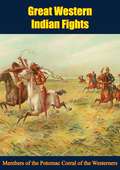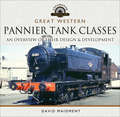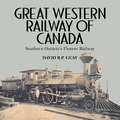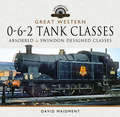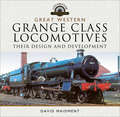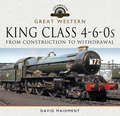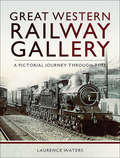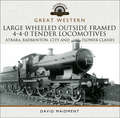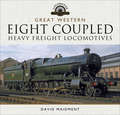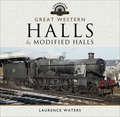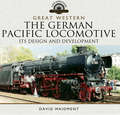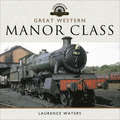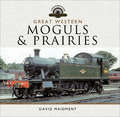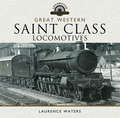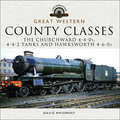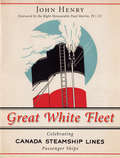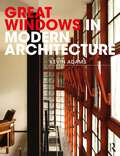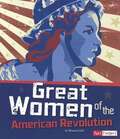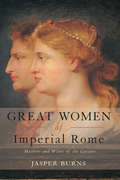- Table View
- List View
Great Western Indian Fights
by Members of the Potomac Corral of the WesternersFrom 1832 to 1891 the states from the Great Lakes west to Oregon and south to Mexico saw scenes of massacre, bloody rout, ambush, fire, and pillage as the great Indian tribes-Blackfoot, Cheyenne, Sioux, Arapaho, Modoc, and Apache-fought desperately to turn back the invading white men.Recreated in this volume, original published in 1960, are twenty-odd battles crucial in the opening of the American West to white settlement. Among the battles included here are the Pierre’s Hole fight, the battle of Bandera Pass, the battle of Pyramid Lake, the battle of Wood Lake, the Canyon de Chelly rout, the battles of Adobe Walls, the Fetterman, Hayfield, and Wagon Box fights, the fight at Beecher Island, the battle of the Washita, the battles of Massacre Canyon and Palo Duro Canyon, the battle of the Rosebud, the battle of the Little Bighorn, the Dull Knife massacre, and the final, tragic battle at Wounded Knee.“A fine guide to the conflict that transpired across the wide Missouri.”—San Francisco Sunday Chronicle“An excellent account of most of the major fights between the white man and the Indian in…the western part of the United States.”—Library Journal“Two dozen of the most celebrated and hair-raising Indian fights on record. Good, solid reading, and a whole peck of it.”—New York Times Book Review
Great Western Pannier Tank Classes: An Overview of Their Design & Development (Locomotive Portfolios)
by David MaidmentThis comprehensive and fully illustrated history presents an in-depth look at the Great Western Railway&’s various pannier tank engines. Though hauling freight was a vital part of Great Western Railway&’s history—and where it made the majority of its profit—there are few books devoted to the stout, powerful engines that did the work. In Great Western, Pannier Tank Classes, British Railways expert David Maidment corrects that oversight. This volume explores the large number of 0-6-0 saddle tanks built for both the Great Western Railway and the independent railway companies in South Wales, most of which were converted to pannier tanks in the Churchward and Collett eras. While covering the Armstrong and Dean engines in detail, Maidment goes on to describe the design, construction and operation of the largest class of steam engines built in the UK in the last century: Charles Collett&’s GWR 5700 class, examples of which were still being built after nationalization. Collett also designed pannier tank engines for branch passenger and freight work, and his successor Frederick Hawksworth continued the GW tradition with a tapered boiler version. All of these are discussed in depth in terms of their design and service. A concluding chapter covers further designs that were never built.
Great Western Pannier Tank Classes: An Overview of Their Design & Development (Locomotive Portfolios)
by David MaidmentThis comprehensive and fully illustrated history presents an in-depth look at the Great Western Railway&’s various pannier tank engines. Though hauling freight was a vital part of Great Western Railway&’s history—and where it made the majority of its profit—there are few books devoted to the stout, powerful engines that did the work. In Great Western, Pannier Tank Classes, British Railways expert David Maidment corrects that oversight. This volume explores the large number of 0-6-0 saddle tanks built for both the Great Western Railway and the independent railway companies in South Wales, most of which were converted to pannier tanks in the Churchward and Collett eras. While covering the Armstrong and Dean engines in detail, Maidment goes on to describe the design, construction and operation of the largest class of steam engines built in the UK in the last century: Charles Collett&’s GWR 5700 class, examples of which were still being built after nationalization. Collett also designed pannier tank engines for branch passenger and freight work, and his successor Frederick Hawksworth continued the GW tradition with a tapered boiler version. All of these are discussed in depth in terms of their design and service. A concluding chapter covers further designs that were never built.
Great Western Railway of Canada: Southern Ontario’s Pioneer Railway
by David R.P. GuayA look back on the brief and spectacular history of Canada’s Great Western Railway. This book chronicles the genesis and all-too-brief existence of one of Canada’s greatest early railways, the Great Western Railway of Canada (1853–1882), a major precursor to the Canadian National Rail system. Today, the Great Western Railway of Canada is a little-known historic line, overlooked even by many railway aficionados. But it was truly a railway ahead of its time. It was a pioneer in combining land- and water-based transportation, including the introduction of river car-ferries and passenger/freight steamships on the Great Lakes. It made waves of a different kind with its acquisition of the American-owned railway linking Detroit, Grand Haven, and Milwaukee. And its mammoth workshops were industrial monuments in Hamilton and London, Ontario, where inventive geniuses laboured to supply the booming rail trade of southern Ontario. It was the ancestor of some of the most heavily used rail lines in all of Canada. This book has been written to do justice to a railway that truly must be considered one of Canada’s trailblazing lines. Amply illustrated with previously unpublished photographs and a thorough historical record of the Great Western Railway’s locomotives and rolling stock, it offers a ride back in time into the vanishing history of early Ontario railroading.
Great Western, 0-6-2 Tank Classes: Absorbed & Swindon Designed Classes (Locomotive Portfolios)
by David MaidmentDescriptions and hundreds of photos of these tank engines that played a major role in Welsh coal mining and passenger rail.After tackling the Great Western Railway’s pannier tanks in a previous Locomotive Portfolios volume, David Maidment seeks out descriptions and photographs of the GW 0-6-2 tank engines, the majority of which were built by the Rhymney, Taff Vale, Barry, and other Welsh railways from the last decade or so of the nineteenth century onward. The engines of eight different companies, absorbed by the GWR in 1922, are described and illustrated, as well as the way in which many were modernized and rebuilt at Swindon or Caerphilly Works in the 1920s. GWR Chief Mechanical Engineer Charles Collett was, however, faced with a motive power crisis in the mining valleys at the Grouping, as many of the companies had economized on essential maintenance as the GW’s takeover drew near, and he had to hurriedly design a standard 0-6-2T to complement and bolster their work as the powerful GW 2-8-0Ts were too heavy and wide for many of the Cardiff valleys. These engines, the 56XX & 66XX classes, became part of the South Wales scene between 1925 and 1964, mainly running the coal traffic between pits and docks, although they dominated Cardiff Valley passenger services until the influx of BR 3MT 2-6-2Ts and GW 41XX 2-6-2Ts in 1954 and 1955. With around 300 black & white photographs, this book takes a wide-ranging look at these locomotives.
Great Western, 0-6-2 Tank Classes: Absorbed & Swindon Designed Classes (Locomotive Portfolios)
by David MaidmentDescriptions and hundreds of photos of these tank engines that played a major role in Welsh coal mining and passenger rail.After tackling the Great Western Railway’s pannier tanks in a previous Locomotive Portfolios volume, David Maidment seeks out descriptions and photographs of the GW 0-6-2 tank engines, the majority of which were built by the Rhymney, Taff Vale, Barry, and other Welsh railways from the last decade or so of the nineteenth century onward. The engines of eight different companies, absorbed by the GWR in 1922, are described and illustrated, as well as the way in which many were modernized and rebuilt at Swindon or Caerphilly Works in the 1920s. GWR Chief Mechanical Engineer Charles Collett was, however, faced with a motive power crisis in the mining valleys at the Grouping, as many of the companies had economized on essential maintenance as the GW’s takeover drew near, and he had to hurriedly design a standard 0-6-2T to complement and bolster their work as the powerful GW 2-8-0Ts were too heavy and wide for many of the Cardiff valleys. These engines, the 56XX & 66XX classes, became part of the South Wales scene between 1925 and 1964, mainly running the coal traffic between pits and docks, although they dominated Cardiff Valley passenger services until the influx of BR 3MT 2-6-2Ts and GW 41XX 2-6-2Ts in 1954 and 1955. With around 300 black & white photographs, this book takes a wide-ranging look at these locomotives.
Great Western, Grange Class Locomotives: Their Design and Development (Locomotive Portfolios)
by David MaidmentThe renowned British railroad historian delivers &“a well-illustrated account of the rationale behind Collett&’s construction of this 80 strong class&” (West Somerset Railway Association). English railway engineer George Jackson Churchward proposed a 5ft 8in wheeled 4-6-0 for mixed traffic duties in 1901 and it was seriously considered in 1905, but it took until 1936 before his successor, Charles Collett, realized the plan by persuading the GWR Board to replace many of the 43XX moguls with modern standard mixed traffic engines that bore a remarkable likeness to the Churchward proposal. David Maidment has written another in his series of &“Locomotive Portfolios&” for Pen & Sword to coincide with the construction of a new &“Grange&” at Llangollen from GW standard parts to fill the gap left by the total withdrawal and scrapping of one of that railway&’s most popular classes—to their crews at the very least. As well as covering the type&’s design and construction, the author deals comprehensively with the allocation and operation of the eighty locomotives and in particular has researched their performance and illustrated it with many examples of recorded logs from the 1930s as well as in more recent times. As in previous volumes, the author has added his own personal experiences with the engines and has sourced more than 250 photos, over 40 of which are in color. &“Superbly researched . . . another extraordinary and unreservedly recommended addition to . . . British Railroading History collections.&” —Midwest Book Review &“Granges worked off-region quite widely, so this is not just a book for the copper-capped chimney brigade; enthusiasts for whom these capable machines are favorites will definitely want this volume on the bookshelf.&” —Railway Modeller
Great Western, King Class 4-6-0s: From Construction to Withdrawal (Locomotive Portfolios)
by David MaidmentAn in-depth look at the British railway company’s celebrated class of steam locomotives, with more than three hundred photos.Built by Collett in 1927 after pressure to restore the Great Western Railway’s pre-eminence in motive power and cope with increasing postwar traffic to Devon and Cornwall holiday resorts, the thirty Kings were the final development of the Churchward Stars and the 1923 Castles and remained on top-link main line duty until their final replacement by the ‘Western’ class 52 diesel hydraulics in 1962. This book includes an insight into the thinking of some of Collett’s senior staff at the end of the 1930s and the eventual transformation in the latter years with redraughting and double chimneys. As well as describing their design and construction, the book comprehensively covers their operation and performance, backed up by many recorded logs on all main GW/WR routes over which they were permitted. The author had close experience of the class when working at Old Oak Common between 1957 and 1962, and includes a chapter of his experiences with them, including many footplate trips (as a management trainee, he was greeted with glee by firemen who would hand him the shovel). The book also includes over 300 photographs, one hundred of them in color.
Great Western: A Pictorial Journey Through Time (Railway Gallery Ser.)
by Laurence WatersIt could be argued that the great Western or 'Gods' Wonderful Railway' was for many years the most famous railway in England. Much of the railway that we see today was the work of one of the greatest engineers of his time, Isambard Kingdom Brunel. The company was also served by locomotive engineers such as Gooch, Armstrong, Churchward, Collett and Hawksworth, who produced a series of locomotives that were well designed, elegant and powerful.Serving many holiday resorts of the south west, with trains such as 'The Cornish Riviera Express,' the publicity department exploited to great effect that the 'Great Western' was the 'Holiday Line.' It is probably true to say that in the years before the Second World War the company was producing some of the most effective publicity material in England.Using previously unpublished material from the extensive 'Great Western Trust' collection at Didcot Railway Centre, the book illustrates in both black and white and color many facets that made the Great Western 'Great"
Great Western: Atbara, Badminton, City and Flower Classes (Locomotive Portfolios)
by David MaidmentThis volume covers all the large wheeled outside frame classes of 4-4-0 tender Locomotives, that once ran on the Great Western Railway.The book has full details on each of the classes with good quality pictures, diagrams names, and number lists.This work is also very useful to model makers, giving full details of mechanical and livery changes that took place from the 1900s through to the early 1930, when all except the preserved 3440, City of Truro, were withdrawn and scrapped.
Great Western: Duke, Bulldog, Dukedog and '3521' Classes (Locomotive Portfolios)
by David MaidmentThe Great Western Railway experienced the trauma and disruption of the end of the broad gauge in 1892 and were faced with equipping the network with suitable motive power, especially in Devon and Cornwall where the last track conversion had taken place. West of Newton Abbot, the GWR had relied on a variety of 4-4-0, 2-4-0, 0-4-2 and 0-4-4 side and saddle tanks, often doubled-headed, and Dean set about designing a sturdy outside-framed powerful 4-4-0 with 5ft 8in coupled wheels, the 'Dukes', to tackle increasing loads over the heavily graded main line. Then, Churchward came to assist the ailing Locomotive Superintendent, using his knowledge and experience of American and continental practice to develop the Dean designs. He improved the efficiency and performance of the boilers, using the Belgian Belpaire firebox, then developed the tapered 'cone' boiler, and applied it to the chassis of the 'Duke's to form the 'Camel' class, later known as the 'Bulldogs', which eventually numbered 156 locomotives. Finally, in the 1930s when engines of the 'Duke' route availability were still required but their frames were life-expired, their boilers were matched with the stronger frames of the 'Bulldogs' to form the 'Dukedog' class, which lasted until the 1950s, particularly on the former Cambrian lines in mid-Wales. This book recounts the design, construction and operation of these small-wheeled outside-framed locomotives with many rare photos of their operation in the first decade of the twentieth century as well as in more recent times.
Great Western: Eight Coupled Heavy Freight Locomotives (Locomotive Portfolios)
by David Maidment'Great Western Eight-Coupled Heavy Freight Locomotives' is the first of a series of 'Locomotive Profiles' to be published by Pen & Sword. It will describe the conception, design, building and operation of the fleet of powerful locomotives built in the first half of the twentieth century to meet the demands of the growing South Wales coal and steel industries and the West Midlands area served by the Great Western Railway. Whilst concentrating mainly on the standard designs of the great locomotive engineer, George Jackson Churchward, the 28XX and 47XX 2-8-0 locomotives, it will also cover the 2-8-0 and 2-8-2 tank engines designed for the South Wales Valleys mining areas and coal exports through Newport, Cardiff, Barry and Swansea Docks, and other 2-8-0 locomotives acquired by the Great Western to cope with the increased industrial needs during both world wars - the RODs, Swindon built 8Fs, WDs and American S160s. It will also cover the earliest designs of the Barry and Port Talbot Railways intended to cope with the valley coal traffic. The book will be copiously illustrated with 150 black and white and 50 coloured photographs and is a comprehensive record of some outstanding freight locomotives, many of the oldest engines still operating to the end of steam on British Railways in the mid 1960s, sixty years after they were designed."
Great Western: Halls & Modified Halls (Locomotive Portfolios)
by Laurence WatersThe gradual growth of the railways in Britain during the late nineteenth and early twentieth centuries, in both passenger and freight traffic, saw the requirement for a more powerful and versatile type of motive power mixed traffic locomotives. The construction of Great Western Halls and Modified Halls gave the Great Western a superb all round locomotive, and for thirty-six years they operated passenger and freight services over the Great Western, and later Western Region. The Hall class were among the largest mixed traffic steam locomotives that ran throughout this country, and this is the first serious volume to focus on them in fifty years. The book charts the history of both classes, from their construction and withdrawal, to their design, development and eventual scrapping. With over 200 black and white, and colour photographs, accompanied by informative captions, each member of the classes is excellently illustrated. It will appeal greatly to those interested in the history of Great Western Locomotive development.
Great Western: Its Design and Development (Locomotive Portfolios)
by David MaidmentThe German Pacific Locomotive (Its Design and Development) is David Maidments fourth book in the series of Locomotive Profiles published by Pen & Sword. It is the first in the series to tackle an important range of overseas steam locomotives, the German pacific locomotives, which, with the Paris-Orleans pacific in France, were the first of that wheel layout in Europe and came to be the dominant type for express passenger work throughout Western Europe for the following fifty years, until displaced by diesel and electric traction. The German railways in the first two decades of the twentieth century were run principally as regional State railways, and two distinct styles of design developed, which were influenced by the natural terrain. In the south, in the mountainous foothills of the European Alps, four cylinder compound locomotives with comparatively small coupled wheels, most produced by the famous firm of Maffei in Munich, held sway from 1907 until the late 1930s, and in parts of Bavaria that were not yet electrified, even until the early 1960s. In the flatter lands of the north, Prussian 4-6-0s sufficed until Paul Wagners standard two cylinder simple pacifics came onto the scene in 1925, and were followed by the three cylinder streamlined pacifics at the start of the Second World War. After addressing the devastating damage to the German railways in the conflict, the book follows the modernization of the locomotive fleet in the postwar period until the elimination of steam in both East and West Germany in the mid-late 1970s. The book describes the design, construction and operation of the full range of pacifics that ran in both parts of Germany, and the large numbers of these locomotives that have been preserved, and is illustrated with over 180 black and white and 80 colour photos.
Great Western: Manor Class (Locomotive Portfolios)
by Laurence WatersThe 30 Manor class 4-6-0s were designed by CB Collett in 1938, and built by the Great Western, and the Western Region at Swindon in two batches, 20 in 1938/9, and 10 in 1950. In order to save money the first 20 members of the class were built using parts from withdrawn 4300 class 2-6-0s, and were coupled to refurbished Churchward 3,500 gallon tenders. The lighter 4-6-0s Manors were given blue route classification which allowed them to work over many secondary lines.The construction of the Manors completed the final stage of Colletts plan to provide a full range of 4-6-0 tender locomotives for Great Western passenger services.Over the years the Manors saw extensive use on services in the South West, West Wales and ex-Cambrian Lines in North Wales. They provided motive power for both the Pembroke Coast Express and the Cambrian Coast Express. Many of the class lasted to the end of steam traction on the Western Region, with the last examples being withdrawn in November 1965. Remarkably of the original 30 members of the class no fewer than 9 have survived.In this book, author Laurence Waters charts the history of the class from their construction at Swindon in 1938, right through to the final withdrawals in 1965. Using many previously unpublished black and white, and colour photographs, accompanied by informative captions, each member of the class is illustrated. This book should appeal to those interested in the history of Great Western Locomotive development as well as modellers of the Great Western and Western Region.
Great Western: Moguls and Prairies (Locomotive Portfolios)
by David Maidment“Traces the bloodline of its 2-6-0 and 2-6-2T classes . . . a comprehensive history of the classes from Churchward to BR days, with excellent photographs.” —Steam RailwayGreat Western Moguls & Prairies is a volume in Pen & Swords series, Locomotive Profiles. It describes the conception, design, building and operation of the fleet of Prairie 2-6-2 tank engines and the Mogul 2-6-0s designed by Churchward in the early part of the twentieth century and perpetuated by his successor, Charles Collett, in the 1920s and 1930s. These engines formed the backbone of the GWR locomotive fleet for secondary passenger and freight work for over half a century and were some of those that remained to the end of steam traction on the Western Region of British Railways. The book also covers some of the lesser known Moguls developed in the Dean/Churchward transition at the end of the nineteenth century and briefly looks at the Mogul and Prairie designs proposed by Churchward, Collett and Hawksworth but were never built. The book is copiously illustrated with over 250 black and white and 60 colored photographs and is a comprehensive record of a group of locomotives found throughout the Great Western and its successor, the Western Region, for over fifty years.“Lavishly illustrated in both colour and black and white, with pictures from the archive and the modern day, there is much here both for the beginner and the seasoned enthusiast, with the book presenting a structured and fresh view of a popular subject.” —Railway Magazine
Great Western: Saint Class Locomotives (Locomotive Portfolios)
by Laurence WatersChurchwards 2 cylinder Saint Class 4-6-0s were arguably one of the most important locomotive developments of the twentieth century. The seventy-seven members of the class were so successful that most of the other railway companies in this country used the same 2 cylinder 4-6-0 formula in the design of their own mixed traffic locomotives. Over the years the Saints saw a number of modifications, with many of the class passing into BR ownership. The last member of the class, no. 2920 Saint Martin, was withdrawn from service in 1953 and was sadly not preserved. However, the Great Western Society are now constructing a replica Saint at Didcot Railway Centre. Numbered 2999 it will be named Lady of Legend.In this book author Laurence Waters charts the remarkable history of the class from the construction of the prototype Saint at Swindon in 1902, right through to the final withdrawals in 1953. Using many previously unpublished black and white photographs, accompanied by informative captions, each member of the class is illustrated. This book should appeal to those interested in the history of Great Western Locomotive development as well as modellers of the Great Western and Western Region.
Great Western: The Churchward 4-4-0s, 4-4-2 Tanks and Hawksworth 4-6-0s (Locomotive Portfolios)
by David MaidmentBritish Railways’ David Maidment presents a pictorial history of the county class trains designed by George Jackson Churchward and F. W. Hawksworth.The Great Western Railway had two classes of tender locomotives named after counties. The first class of two cylinder 4-4-0 tender locomotives, designed by George Jackson Churchward, were introduced in the 1900s to provide efficient motive power, including lines on the North & West route between Hereford and Shrewsbury, owned jointly by the Great Western and the London and North Western Railway.The 4-4-0 counties were in service until the early 1930s, when they were withdrawn and replaced by more modern motive power. The 4-4-0 counties were paralleled in design by the county 4-4-2 tanks, which operated suburban services in the London area and were also withdrawn in the early 1930s. In 1945, the Great Western introduced the County Class 4-6-0 tender locomotives, designed by F. W. Hawksworth. These two cylinder machines had a high pressure boiler that was meant to give the same tractive effort as a Castle Class 4-6-0, four cylinder locomotive. After modifications and boiler pressure reduction, the County Class 4-6-0s operated in express and semi fast train service, until the last members of the class were withdrawn in 1964.Great Western, County Classes: The Churchward 4-4-0s, 4-4-2 Tanks and Hawksworth 4-6-0s details the fascinating history of the trains that were a crucial part of England’s twentieth century transportation system.
Great White Fleet: Celebrating Canada Steamship Lines Passenger Ships
by John Henry The Right Honourable Paul MartinA richly illustrated story from the glory days of passenger travel on the Great Lakes. For decades Canada Steamship Lines proclaimed itself as the world’s largest transportation company operating on inland waters. Its passenger and freight vessels could be found on the Great Lakes as far west as Duluth, Minnesota, and as far east as the Lower St. Lawrence River. The passenger steamers were known collectively as the Great White Fleet. These ships – from day-excursion vessels to well-appointed cruise ships – had rich histories. The sheer scope of these passenger services were a wonder to behold. No fewer than 51 steamers comprised the passenger fleet at the company’s inception in 1913, and its network of routes was awesome. This is the story of the beloved steamers of the Great White Fleet from 1913–65, when the passenger vessels stopped running. Nearly half a century after the last passenger boats sailed, this book will provide a window into a wonderful lost way of life.
Great Windows in Modern Architecture
by Kevin AdamsWindows are moments in modern architecture where we look to ascertain elegance, technical expression and material language or to capture a certain atmosphere. A window opening is as much an interval and an opportunity as it is a device for admitting light, air or views; it is simultaneously a physical aperture but also a philosophical opening of collaboration and reflection. In order to understand the language of a building we might look to the detail of the window. But what does this mean and why does modern architecture invest so much expression in the window?This book explores how the act of detailing and situating windows in buildings is a key proponent in the language of architecture, which both informs and works with the contingencies of design and construction. It investigates 18 case studies in-depth using painstakingly drawn details and vivid photographs in full colour to define what makes these windows “great” and how each window is situated within both its technical and philosophical context and as an overall development of modern architecture.Case studies include the work of Walter Gropius, Mies van der Rohe, Pierre Chareau, Frank Lloyd Wright, Alvar Aalto, Carlo Scarpa, Le Corbusier, Stirling and Gowan, Raili and Reima Pietilä, Louis Kahn, Peter Womersley, Miralles/Pinós, Steven Holl, Glen Murcutt and O’Donnell + Tuomey.
Great Women Of The American Revolution (The Story Of The American Revolution)
by Brianna HallMen may have fought the battles of the American Revolution, but women played an important part too. Some women fought the battle at home, speaking their minds about the British occupation or gathering supplies for their soldiers. Others fought openly for their cause, secretly joining the military or becoming spies. Get to know these heroic women and their importance to the colonists' victory during the Revolutionary War.
Great Women Teachers
by Alice FlemingWhat these ten ladies have in common is that they significantly influenced education in the United States. These ten, short biographies commence with the implementation of education for girls (Willard) in the 1800s and end with a sketch of the twentieth-century teacher (Gildersleeve) who promoted International studies.
Great Women of Imperial Rome: Mothers and Wives of the Caesars
by Jasper BurnsDrawing from a broad range of documentation this book vividly characterizes eleven royal women who are brought visually to life through photographs of over 300 ancient coins and through the author's own illustrations. Spanning the period from the death of Julius Caesar in 44BC to the third century AD, and with an epilogue surveying empresses of later eras, the author's compelling biographies reveal their remarkable contributions towards the legacy of Imperial Rome. Examining the wives, daughters, sisters and mothers of emperors, the study includes: a pregnant Roman princess who saves a Roman army through an act of personal heroism three third-century empresses who rule the most powerful state on Earth, presiding over unprecedented social and political reform an empress, though revered by her husband, is immortalized in history for infidelity and corruption by students of her greatest enemy. Jasper Burns paints portraits of these exceptional women that are colourful, sympathetic, and above all profoundly human. This book will be highly valuable to numismatists, students and scholars of Roman history or women’s studies.
Great Woodcuts of Albrecht Dürer
by Albrecht Durer Carol Belanger GraftonA master of many media, Albrecht Dürer (1471-1528) excelled in the art of woodcut design. This modestly priced edition, comprising images both sacred and secular, offers an ideal introduction to his work. Scenes from the lives of Jesus and the saints and episodes from the Old Testament appear alongside a variety of subjects, including a portrait of the Emperor Maximilian and Dürer's coat of arms. The ninety-four black-and-white illustrations feature brief captions with basic information regarding titles and dates. Long treasured by the world's art lovers, these familiar and lesser-known woodcuts are reproduced in excellent detail. They constitute an indispensable archive for professional art historians and critics as well as a source of pleasure for all others.
Great Yachts of Long Island's North Shore
by Robert B. MackayAt the turn of the 20th century, Long Island's North Shore, the so-called Gold Coast, was becoming the most desirable residential area in the United States. Estates belonging to American captains of finance and industry lined the bluffs and bays from the city line to Eaton's Neck. Some of the nation's most renowned families--including the Astors, Bakers, Huttons, Morgans, Pratts, Sloans, Roosevelts, Whitneys, and Vanderbilts--used their yachts for racing, cruising, commuting, or epic voyages. These vessels regularly plied the waters of the North Shore and bolstered the development of yacht clubs like the New York and Seawanhaka Corinthian--city institutions that established stations at Glen Cove and Centre Island, respectively. These clubs served to provide many outlets for the social gatherings that accompanied this pastime. Although the Great Depression and then World War II would bring the era of the great yachts to an end, a wealth of images remain that can be marveled at a century later.
